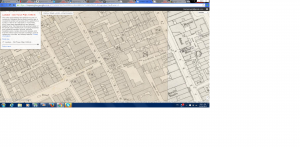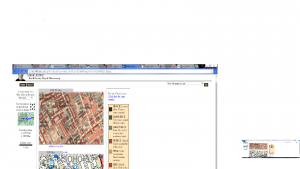Within the Picture of Dorian Gray by Oscar Wilde, there are themes and motifs/attributes and allusions that are aimed at Victorian society through the use and significant stereotypes and realizations about Aestheticism within this time period. In Curzon street and in Mall Pall, there are accounts and descriptions of these places that relate to the book and the actions/what takes place along the streets according to the plot of the novel.
Curzon street lies among the city of Westminster and runs from park lane to Berkeley Square. It is home to many people who are rich in status and live among that street living a high life of pristine and elegance. In the picture of Dorian Gray, Lord Henry walks down that street to visit his uncle. His uncle is described as “an old bachelor whom the outside world called selfish because it derived no particular benefit from him, but who was considered generous by Society as he fed the people who amused him” (Chapter III). It shows (although the street is only mentioned that one time) that the rich people living on this street think very highly of themselves, and much like Lord Henry and his uncle, most likely think poorly of the impoverished citizens that reside in the East end of London. It goes to show how this reveals the inherent nature of Lord Henry and how his influence over Dorian will soon be completely corrupted by the false image of “beauty” that in turn will reveal Dorian’s inner “ugliness” later on in the novel. Furthermore, the essence and essential notion that beauty plays for Dorian Gray will be an intricate plot point revealing the theme of the novel, as the gray area dividing both the “East and West” ends of London and the “beauty and ugliness” of Dorian will go hand in hand. Thus, showing an intricate relationship between the individual and the society in which they live and how they influence each other.
In the Old Bailey online archive, there are many reports of what it turns out to be a high number of robbery of theft. the accounts are of rich people condemning poor people of stealing household items such as silverware, and selling them to make money (or possibly using them to eat, Because that is what silverware is for). Some of the accounts relay a vast number of religious themes as many of the rich people called the peasants “unchristian” or any other term saying they were abominations in the eyes of God, thus showing the importance of adhering to a religious belief that could be favored in the eyes of the country (Christianity). This archive shows that for Dorian Gray, the importance of religion shows a sort of high standard of living and a specific amount of intelligence and grace that can be seen as a form of art. This would allure to Dorian and his obsession with elegance and artistic things, as well as Basil and Lord Henry’s obsession with Dorian Gray.
 this map on the Charles Booth Poverty Map shows what is stated above: it is predominantly upper middle class and wealthy citizens that live along this street, which has also been known to be visited by many famous people of whom are of Lordship or any high standing label. The citizens of the middle class color (pink) and the citizens of high middle class (red) are the ones who were most likely to cause the chaos and rob people along this street leading for the accounts in the Old bailey archive to label these important people as “unchristian” or barbaric due to their upheld standing as a wealthier citizen of London.
this map on the Charles Booth Poverty Map shows what is stated above: it is predominantly upper middle class and wealthy citizens that live along this street, which has also been known to be visited by many famous people of whom are of Lordship or any high standing label. The citizens of the middle class color (pink) and the citizens of high middle class (red) are the ones who were most likely to cause the chaos and rob people along this street leading for the accounts in the Old bailey archive to label these important people as “unchristian” or barbaric due to their upheld standing as a wealthier citizen of London.
Therefore it can be deduced that this street has a huge effect upon Dorian Gray based upon the high class and wealthy citizens that live along that street, whom also show a high quality obsession with elegance and aesthetic things much like Dorian himself, thus showing that the society in which one lives, and the attributes and lifestyles of said culture, can shape and influence a person into whatever that society sees as “valuable”. This is evident among the plot and course of Dorian Gray.
Works Cited:
“Booth Poverty Map & Modern Map (Charles Booth Online Archive).” Booth Poverty Map & Modern Map (Charles Booth Online Archive). N.p., n.d. Web. 07 Dec. 2015.
“The Picture of Dorian Gray (1891)/Chapter 3.” – Wikisource, the Free Online Library. N.p., n.d. Web. 07 Dec. 2015
“The Proceedings of the Old Bailey.” Browse. N.p., n.d. Web. 07 Dec. 2015






